RECENT DEVELOPMENTS

On May 22nd and 23rd 2012, I attended the Global Conference on Oceans, Climate and Security at the University of Massachusetts in Boston. The conference provides ocean researchers the opportunity to interrogate the government's consideration of climate change on ocean health and consider the government's perspective on science. We spent the day catching up on climate change science, ocean science, and potential approaches to improving security for all the coastal living populations around the world. As expected, the conference was very sobering about potential issues upcoming in the next thirty years and recommended changes in our society to buffer and adapt to those potentialities.

For Earth Day 2012, I participated in the Party for the Planet at the Roger Williams Park Zoo in Providence, RI. We spent the day educating children and their parents about watershed quality as it relates to world ocean water quality. Ideal Spring weather made the day and enormous success (over 8000 visitors of which 583 children spent time at my booth).
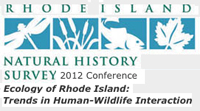
On March 29, 2012, I attended the annual RINHS conference to gain perspective on current trends in human-wildlife interactions from researchers and share notes with researchers on the east coast of the United States.

During March 12-16, 2012, I spent time at the National University of Singapore as an invited academic researcher. After a day-long research trip to the Nanyang Technological University to discuss research in engineering design, I spent four days on the NUS campus lecturing and discussing the design of systems visualization.
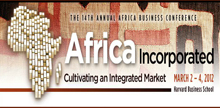
On February 27th, I spent a day at the Harvard Business School, attending a panel on exit strategies for African capital investments. What a special day — to hear everything my sister had accomplished in a fascinating career of building capital investment markets in Africa. So many Africans attending with whom to discuss world events. Our modern world is unique. When else in our history could one so effectively travel to another continent without leaving home?
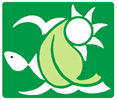
On February 27th, I spent a day at the Rhode Island Compost Conference & Trade Show where knowledgable advisers from outside Rhode Island met with concerned citizens and potential business owners within Rhode Island. We spent the day learning about progress countrywide on all issues of composting and then honed in on issues most relevant to our local communities.
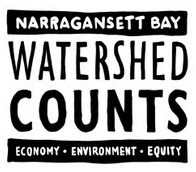
On February 23rd, I spent a day advising the Watersheds Count committee that was working to identify and add metrics to watershed indicators that could help Rhode Island politicians set plans and objectives. The focus of the day's efforts were spent on an Open Space indicator which we deemed useful to elaborate upon for RI's use. The phrase Open Space has been used for years when considering bonds for funding open space conservation and protection.

On February 17th, I spent a day with the Friends of the Moshassuck water council Board of Directors where I have a position as Vice President. We spent the day planning for watershed health for the year: Tree plantings, kayak access points, clean-up efforts, and watershed history discussions were extremely enjoyable as everyone on the board felt a sense of progress and community. Hopefully, similar meetings are taking place all around the globe, and a similar growing awareness is being spread watershed by watershed.
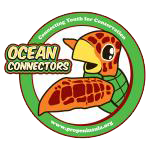
On January 31st, I spent a day with the Ocean Connectors program in San Diego. We spent the day planting marsh alders (a species endemic to San Diego County) while educating a seventh grade class from Oceanside on the connectivity of watersheds to the ocean. We focused on the health of sea turtles and convinced the youths that the quality of the water coming out of the San Dieguito Lagoon made a difference in the lives of sea turtles in the ocean.

On January 5th, 2012, I visited the New York Foundation in New York City to kick-off a project to coordinate community organizing pedagogy through an on-line community funded by the Community Learning Partnership. It was great to meet new collaborators with such a strong history of helping the under-served organize their communities.
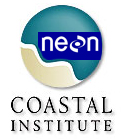
On November 29th, 2011, I attended the Emerging Topics in Environmental Data workshop at the University of Rhode Island Coastal Institute. It was great to meet some more of the environmental data management and visualization community. Dr. Brian Wee is kind enough to share his presentation on-line with our community.

During October 24-28th, I attended the VisWeek 2011 conferences in Providence, RI to network with other visual analytics researchers, get caught up with the latest trends in information and scientific visualization, and co-curate the VisWeek Art Show with Dan Keefe of the University of Minnesota.

During October 12-14th, I attended the Do It With Drupal conference in New York City to network with other content management system developers, get caught up with the latest trends in mobile and social media, and pitch the Watersheds Project mission to attendees. The Drupal community is one of those highly respectful and yet capable open source communities that I have come to enjoy since participating with the Python and Eclipse communities previously.

On September 12th, my fourth year as faculty at RISD begins after a wonderful campus-wide picnic and faculty cocktail hour. I'm excited to update all of my eight courses as there is a lot going on in a changing Web landscape. This year brings to life new HTML 5 components of the Web Page Design and Dynamic Web Pages courses and continues to promote better coordination of Web content across sites.

On July 25th and 26th, I met with Blue Legacy and The Ocean Foundation in Washington, DC to discuss potential contribution to proposed initiatives developed around watershed health and conservation. The Watersheds Project would contribute on various objectives if funded.

On May 25th, I attended the Conservation Science Symposium in Loreto, Mexico, in order to introduce the WatershedsProject tool platform to those who apply science to the conservation and management of natural resources on the Baja California Peninsula and the Gulf of California. I enjoyed spending time with a couple hundred scientists focusing on projects in the area and getting out on kayak and bicycle before the conference started. See a panoramic QuickTime of the kayaking destination. Having used the carbon to get out west, I decided to check out the Merced and Kings watersheds to do some hiking.

On April 28th, I attended the 14th annual Salt Ponds and Coastal Lagoons Science Symposium with a hundred scientists and educators in Quonset, Rhode Island. I had a feeling the day would reinforce my appreciation and interest in the unique salt ponds of Rhode Island and Buzzard's Bay region of Massachusetts.

On March 26th, 2011, I attended the 8th annual Rhode Island Land and Water Summit which has reached legendary proportion in connecting land trust and water council Rhode Islanders into a cohesive whole of determined conservationists. The day did not disappoint as I networked with so many of the people I have come to respect in our state.

During the week of March 7th, I visited the UM School of Architecture and Computer Science Department to coordinate some activities for VisWeek 2011 in Providence as well as meet with a couple of clients who have significant operations in the Minneapolis area.

As an invited presenter and workshop participant of What Grows On Rhode Island, I participated in the Rhode Island Flower and Garden Show during February 24-27, 2001 to help New Englanders consider the connection between gardening and better watershed quality.
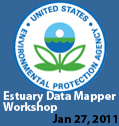
As an invited Director of the Watersheds Project, I attended the EPA's Estuary Data Mapper Workshop on January 27th and February 8th, 2011. The workshop was run out of Narragansett, RI at the Atlantic Ecology Division (AED) headquarters. The EPA continues to work on on-line visual tools for preparing data sets for analysis — including development of input sets to various useful and available earth science modeling tools.
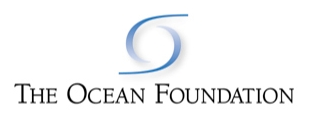
On December 22, 2010, I headed to Washington, DC to sign the paperwork to transfer the Watershed-to-Ocean Initiative from The Ocean Project. The Watersheds Project is officially a tax-deductible project of The Ocean Foundation.

The PhD is official and the dissertation is being published by University of Michigan Press. Both a degree validation (enter Campbell and Bruce in the form) and degree audit are available as proof that it is all official.
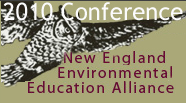
As part of a grant contract, I attended the annual New England Environmental Eduation Alliance conference in Fairlee, VT during October 21-23, 2010. Keynote presentations from Bill McKibben and Dana Hudson highlighted two days of workshopping environmental education themes.

As part of a NOAA grant, I built a visualization system for Clean The Bay so they could track the large debris items they removed from the Narragansett Bay watershed during the summer of 2008. The resulting debris report and mapping service can be used to track all debris removed over many summers. Phase II of the NOAA money aims to create a tide and current visualization for supporting a visual analytics process of guestimating where debris items originate.

As the dissertation writing tasks finish up, I headed to Rangeley, Maine, during the week of August 15th to focus and get some fresh air. Here's a panoramic QuickTime of the top of Bald Mountain, a lovely hike to the top of the Rangeley, Mooselookmeguntic, and Richardson Lakes area. A new disc golf course, Troll Valley also helped me let off some steam.

My third full academic year at RISD ended with me teaching the annual video games with Flash course. The student projects were fantastic as a final deliverable, but the process of sharing ideas and working together was the real gem. A great group of students who could do anything in the future as a team.

I finished reviewing paper submissions for the IADIS Multi Conference on Computer Science and Information Systems 2010 that took place in Freiburg, Germany during 26 – 31 July 2010 (and also the 2011 conference in Rome). The submissions were informative and the schedule looked great. Sadly, I could attend either of the conferences in person but did make it to Germany in September 2010 for a chance to see extended family instead.

May 18th was a huge day in the lives of the two seniors at Central High that I had mentored through their senior year theses. Although they had both submitted great written papers on Global Warming and Brain-Computer Interfaces (A+ and B+ respectively), they still had to defend their theses orally with slide presentations — something I remember was extremely stressful back in my high school days. I beamed with pride to see the growth experienced by them both. I hope to get two new mentees next year, but of course that depends on if they independently choose topics of which I am worthy.

To finish presenting a trilogy of dissertation thesis papers, I attended the 7th International Conference on Information Systems for Crisis Response and Management in Seattle, WA on May 4-6, 2010 to present a paper related to our emergency response crisis visualization tool.

For Earth Day 2010, along with presenting again as part of the Florida Virtual School Earth Day lectures, I participated in the Party for the Planet at the Roger Williams Park Zoo in Providence, RI. We spent the day educating children and their parents about watersheds and how they could get involved conserving their local streams.

I headed to Nebraska to meet with my thesis adviser on April 2, 2010. Besides visiting the University of Nebraska in Lincoln and UNO, I accompanied the Audubon Society on the annual Sandhill Cranes migration viewing event and played six most excellent disc golf courses in the area.

I was invited to present at the 11th Pecha Kucha night in Providence, RI on February 16, 2010 to present my vision on using urban and natural systems visualization to promote better community. The house was packed to standing room only as the mayor also presented soon after announcing his candidacy for the house of representatives.

As my one break from dissertation work that winter, I pitched our Watershed-to-Ocean Initiative to the Listen to Your Lakes coordinators at the Shedd Aquarium in Chicago, IL on January 13th, 2010. Based on their valuable feedback, we released a popular on-line demonstration of our tool focused on conservation in the greater Lake Michigan watersheds area.

On November 18th, 2009, I provided a GIS Day workshop at Nathan Bishop Middle School in Providence, RI. GIS Day activities ran all around the world.
 On October 11-15th, I attended the Vis, InfoVis, and VAST conferences in Atlantic City, NJ, to catch up on all the lastest research while reconnecting with my colleagues after missing last year's festivities. Great to see so many alumni from Brown, but no one from the University of Washington.
On October 11-15th, I attended the Vis, InfoVis, and VAST conferences in Atlantic City, NJ, to catch up on all the lastest research while reconnecting with my colleagues after missing last year's festivities. Great to see so many alumni from Brown, but no one from the University of Washington.
 On September 14-17th 2009, I discussed a project update poster at the AZA Annual Conference in Portland, OR, on the one-year anniversary of our first AZA Watershed-to-Ocean Initiative presentation to the zoo and aquarium community.
On September 14-17th 2009, I discussed a project update poster at the AZA Annual Conference in Portland, OR, on the one-year anniversary of our first AZA Watershed-to-Ocean Initiative presentation to the zoo and aquarium community.
 On June 8th, 2009 (and again in 2010), I coordinated the World Oceans Day event list for the world. World Oceans Day has been proclaimed by the United Nations as officially June 8th every year. I wore blue in the honor of the world ocean and attended a local event in Providence.
On June 8th, 2009 (and again in 2010), I coordinated the World Oceans Day event list for the world. World Oceans Day has been proclaimed by the United Nations as officially June 8th every year. I wore blue in the honor of the world ocean and attended a local event in Providence.
![]()

On June 6-7, 2009, I participated in the sustainable living festival held annually at the Apeiron Institute for Sustainable Living (manned a booth on behalf of the ocean and The Ocean Project). The festival is a very hopeful event for those who believe the state of Rhode Island is poised to be a leading state in the development of green technologies. The demonstration house is fantastic and Brad is the best director I could imagine for running that place. Dar Williams rewarded us greatly at the end of the first day of heavy networking and visioning.
 On June 4th, 2009 I celebrated the exciting renaming of our newly established Industrial & Systems Engineering department at the University of Washington. After working thirteen years in the Industrial Engineering department on studying, understanding, and improving both natural (ocean and watershed-based ecosystem) and man-made processes, I am so proud to have the word Systems added to our name. We truly have been doing work on modeling and simulating systems of all types within the department and we surely deserved to get our own structure independent of the mechanical engineering department that helped spin us off years ago. Sometimes holding out a bit on big life events pays off - my doctoral degree will now officially be granted within the new department jurisdiction — A proud day for all faculty, administrators, students, and alumni!
On June 4th, 2009 I celebrated the exciting renaming of our newly established Industrial & Systems Engineering department at the University of Washington. After working thirteen years in the Industrial Engineering department on studying, understanding, and improving both natural (ocean and watershed-based ecosystem) and man-made processes, I am so proud to have the word Systems added to our name. We truly have been doing work on modeling and simulating systems of all types within the department and we surely deserved to get our own structure independent of the mechanical engineering department that helped spin us off years ago. Sometimes holding out a bit on big life events pays off - my doctoral degree will now officially be granted within the new department jurisdiction — A proud day for all faculty, administrators, students, and alumni!
 During May 19-24, 2009, I presented a poster entitled Watershed to Ocean: Personal Connections to the Ocean Through On-line Interactive Experiences at the International Marine Conservation Congress at George Mason University near Washington, DC. My presentation followed-up on the work introduced in Shanghai and invited other North American watershed stakeholders to participate in our grass roots, watershed quality social-networking through visual literacy, process.
During May 19-24, 2009, I presented a poster entitled Watershed to Ocean: Personal Connections to the Ocean Through On-line Interactive Experiences at the International Marine Conservation Congress at George Mason University near Washington, DC. My presentation followed-up on the work introduced in Shanghai and invited other North American watershed stakeholders to participate in our grass roots, watershed quality social-networking through visual literacy, process.
 On May 6, 2009, Renee Grinnell and I attended a Conservation Development Workshop at the RI Department of Environmental Management in Providence, RI. We represented The Ocean Project, but really we represented our interests as public citizens as we learned about the current process to conserve a parcel of land. We learned about the organizations that help a citizen promote conservation. We learned about the software available to map a targeted conservation area in ways that promote the benefits of conservation. And, we all divided into four teams to practice the process on a recently conserved residential zone. I must say that the Blue Team's proposal was the best — no doubt because we had the most diverse group of citizens working together of all the teams. I wish everyone would attend such a workshop if only to get conservation themes on their radar.
On May 6, 2009, Renee Grinnell and I attended a Conservation Development Workshop at the RI Department of Environmental Management in Providence, RI. We represented The Ocean Project, but really we represented our interests as public citizens as we learned about the current process to conserve a parcel of land. We learned about the organizations that help a citizen promote conservation. We learned about the software available to map a targeted conservation area in ways that promote the benefits of conservation. And, we all divided into four teams to practice the process on a recently conserved residential zone. I must say that the Blue Team's proposal was the best — no doubt because we had the most diverse group of citizens working together of all the teams. I wish everyone would attend such a workshop if only to get conservation themes on their radar.
 On April 22, 2009, as part of the Virtual Earth Day program in the Florida Public Schools, I presented a vision of a watershed quality improvement process driven by community efforts sponsored by local zoos, aquariums, museums, and conservation organizations. We used the Elluminate online software to share ideas and discuss the future of our planet through a lifelong student commitment to participation in good environmental management for the benefit of our world ocean.
On April 22, 2009, as part of the Virtual Earth Day program in the Florida Public Schools, I presented a vision of a watershed quality improvement process driven by community efforts sponsored by local zoos, aquariums, museums, and conservation organizations. We used the Elluminate online software to share ideas and discuss the future of our planet through a lifelong student commitment to participation in good environmental management for the benefit of our world ocean.
 During April 13-17, 2009, I presented a paper entitled Training for emergency response with RimSim:Response! at the SPIE Defense, Security, and Sensing Conference in Orlando. We have the opportunity to modify our emergency response visualization tool to look at issues in military logistics related to distributed cognition across multiple jurisdictions and, as a result, presented our experiments with agent simulation at the conference.
During April 13-17, 2009, I presented a paper entitled Training for emergency response with RimSim:Response! at the SPIE Defense, Security, and Sensing Conference in Orlando. We have the opportunity to modify our emergency response visualization tool to look at issues in military logistics related to distributed cognition across multiple jurisdictions and, as a result, presented our experiments with agent simulation at the conference.
 During March 23-28, 2009, I attended the AZA Mid-year Meeting in Oklahoma City and visited Chris Weaver at his new digs at the University of Oklahoma School of Engineering in Norman. I had planned on running a workshop on the Ocean Project's Watershed-Ocean Initiative and convincing more of our partners to provide resources for developing visualizations for their regional watershed(s). But, the workshop got cancelled as collaborators were not willing to fund travel at this time. I caught up with Chris on his Improvise work and presented at an academic seminar while in town.
During March 23-28, 2009, I attended the AZA Mid-year Meeting in Oklahoma City and visited Chris Weaver at his new digs at the University of Oklahoma School of Engineering in Norman. I had planned on running a workshop on the Ocean Project's Watershed-Ocean Initiative and convincing more of our partners to provide resources for developing visualizations for their regional watershed(s). But, the workshop got cancelled as collaborators were not willing to fund travel at this time. I caught up with Chris on his Improvise work and presented at an academic seminar while in town.
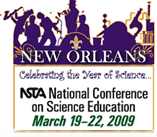 During March 19-23, 2009, I presented a paper entitled Exploring watersheds and conservation action using a Web-based, interactive application at the National Science Teachers Association Annual Conference in New Orleans. My presentation ran right after the first keynote on March 19th. I had always wanted to attend the NSTA annual conference because I've met so many inspired colleagues at the UW who come back from the conference all hopeful and fired up with enthusiasm for teaching (and learning since you can't teach without learning) science.
During March 19-23, 2009, I presented a paper entitled Exploring watersheds and conservation action using a Web-based, interactive application at the National Science Teachers Association Annual Conference in New Orleans. My presentation ran right after the first keynote on March 19th. I had always wanted to attend the NSTA annual conference because I've met so many inspired colleagues at the UW who come back from the conference all hopeful and fired up with enthusiasm for teaching (and learning since you can't teach without learning) science.
 As part of the Spring conference tour, I spent four days in El Paso, Texas visiting with our border security project friends in the School of Business and Center for Defense Systems Research. Thanks to Richard Posthuma for making my visit so pleasant and worthwhile. I spent the following two days in the Big Bend Ranch State Park hiking through the desert along the southern ridge of the Rio Grande valley — feeling a little strange about there being such a significant world border there when there was nothing in sight to suggest such a status. I did not encounter a single border control agent, but had been warned to be on my best behavior had I done so.
As part of the Spring conference tour, I spent four days in El Paso, Texas visiting with our border security project friends in the School of Business and Center for Defense Systems Research. Thanks to Richard Posthuma for making my visit so pleasant and worthwhile. I spent the following two days in the Big Bend Ranch State Park hiking through the desert along the southern ridge of the Rio Grande valley — feeling a little strange about there being such a significant world border there when there was nothing in sight to suggest such a status. I did not encounter a single border control agent, but had been warned to be on my best behavior had I done so.
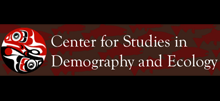 My RA responsibilities changed as I received an offer to work with Mark Haselkorn within the National Center for Border Security and Immigration (NCBSI) construct he had been organizing with colleagues at UTEP and Wayne State University. My role required me to contribute useful work at the Center for Studies in Demography and Ecology within the UW community. I continued to work my Research Scientist position minimally to keep health benefits — and looked forward to potential work with the Seattle Port Authority should a large proposal working with the port and regional Coast Guard hit the mark.
Turnover at the US Coast Guard significantly hurt our chances of getting a grant going while I worked as an RA. And yet, the RA appointment gave me an interesting domain to apply my talents as I accumulated the necessary dissertation credits required of a PhD degree.
My RA responsibilities changed as I received an offer to work with Mark Haselkorn within the National Center for Border Security and Immigration (NCBSI) construct he had been organizing with colleagues at UTEP and Wayne State University. My role required me to contribute useful work at the Center for Studies in Demography and Ecology within the UW community. I continued to work my Research Scientist position minimally to keep health benefits — and looked forward to potential work with the Seattle Port Authority should a large proposal working with the port and regional Coast Guard hit the mark.
Turnover at the US Coast Guard significantly hurt our chances of getting a grant going while I worked as an RA. And yet, the RA appointment gave me an interesting domain to apply my talents as I accumulated the necessary dissertation credits required of a PhD degree.
 As of January 1, 2009, the year has turned and we are in the midst of some hyped changes in our society. I figured I might as well make some changes myself. I hadn't been taking full advantage of my PhC designation (which Miles reminded me is a big deal at the UW Ocean Sciences Christmas party) which was conferred to me upon passing my General Exam. Well, the time seems ripe as I am on a roll with seven of my last papers being accepted for publication, our RVAC seed funding behind us and I have 27 dissertation credits to accumulate before I can be given my PhD degree. So, I am spending the next two quarters as a full-time graduate student which comes in nicely for all the conferences fees I must pay to present papers during the Spring conference season.
As of January 1, 2009, the year has turned and we are in the midst of some hyped changes in our society. I figured I might as well make some changes myself. I hadn't been taking full advantage of my PhC designation (which Miles reminded me is a big deal at the UW Ocean Sciences Christmas party) which was conferred to me upon passing my General Exam. Well, the time seems ripe as I am on a roll with seven of my last papers being accepted for publication, our RVAC seed funding behind us and I have 27 dissertation credits to accumulate before I can be given my PhD degree. So, I am spending the next two quarters as a full-time graduate student which comes in nicely for all the conferences fees I must pay to present papers during the Spring conference season.
 On December 29th 2008, I spent a day visiting the Community Learning Partnership in Washington, DC. We reviewed the latest working papers that are being distributed widely in order to build a worldwide network of community change specialists - those who can help inner-city communities build community change leaders from within through support and practical educational opportunities.
On December 29th 2008, I spent a day visiting the Community Learning Partnership in Washington, DC. We reviewed the latest working papers that are being distributed widely in order to build a worldwide network of community change specialists - those who can help inner-city communities build community change leaders from within through support and practical educational opportunities.
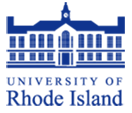 On November 14th 2008, I participated in the Reaching out to Residents workshop at the University of Rhode Island - coordinated by the NEMO Cooperative Program. Along with both watershed council representatives and goverment officials, we workshopped ideas on how best to work together while focusing on the largest threat to our shared water quality: Nonpoint polution from citizens and businesses. The workshop was wonderfully planned and executed and I got a real sense of how watershed councils, town governments, and state government organizations can work together (and how far our humble beginnings have grown to date). Stormwater cleanliness and diversion is a great topic to bring people together from various walks of life - it is time Rhode Islanders caught up with our Massachusetts neighbors in this regard.
On November 14th 2008, I participated in the Reaching out to Residents workshop at the University of Rhode Island - coordinated by the NEMO Cooperative Program. Along with both watershed council representatives and goverment officials, we workshopped ideas on how best to work together while focusing on the largest threat to our shared water quality: Nonpoint polution from citizens and businesses. The workshop was wonderfully planned and executed and I got a real sense of how watershed councils, town governments, and state government organizations can work together (and how far our humble beginnings have grown to date). Stormwater cleanliness and diversion is a great topic to bring people together from various walks of life - it is time Rhode Islanders caught up with our Massachusetts neighbors in this regard.
 On October 30th and 31st 2008, I participated in the inaugural UW conference on Safety and Security Research and Education in Seattle, WA. Along with my PARVAC colleagues, we discussed the long-term relevance of our RimSim:Response! emergency preparedness simulator with an interested audience of community emergency response personnel.
On October 30th and 31st 2008, I participated in the inaugural UW conference on Safety and Security Research and Education in Seattle, WA. Along with my PARVAC colleagues, we discussed the long-term relevance of our RimSim:Response! emergency preparedness simulator with an interested audience of community emergency response personnel.
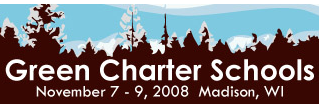 On November 7-9th 2008, I promoted ocean awareness and conservation in education curriculum at the Green Charter Schools Conference in Madison, WI. We shared our vision and game plan to promote better coordination of ocean awareness and conservation themes incorporated into collaborations between schools and local zoos, aquariums, museums, and conservation organizations.
On November 7-9th 2008, I promoted ocean awareness and conservation in education curriculum at the Green Charter Schools Conference in Madison, WI. We shared our vision and game plan to promote better coordination of ocean awareness and conservation themes incorporated into collaborations between schools and local zoos, aquariums, museums, and conservation organizations.
 On October 21, 2008, I presented a paper and demonstration of the Watershed-Ocean Initiative of The Ocean Project at the International Aquarium Congress in Shanghai. A significant majority of all interested aquarium owners and management in the world attended the congress which occurs every four years. The conference focused on collaboration between east and west and seemed to be a wee bit conservative - likely due to a language barrier that was only partially compensated for by real-time translation services for English, Chinese, and Japanese. Although my session was attended by a who's who in big name aquarium mover and shakers, it lacked attendance by the middle management tier for which my work might be best suited. I am hopeful that our paper will trickle down in the various institutions over time.
On October 21, 2008, I presented a paper and demonstration of the Watershed-Ocean Initiative of The Ocean Project at the International Aquarium Congress in Shanghai. A significant majority of all interested aquarium owners and management in the world attended the congress which occurs every four years. The conference focused on collaboration between east and west and seemed to be a wee bit conservative - likely due to a language barrier that was only partially compensated for by real-time translation services for English, Chinese, and Japanese. Although my session was attended by a who's who in big name aquarium mover and shakers, it lacked attendance by the middle management tier for which my work might be best suited. I am hopeful that our paper will trickle down in the various institutions over time.
 Bill Mott and I participated in an interactive panel entitled Sustainable Oceans - A Future in Question at the 2008 Association of Zoos and Aquariums Annual Conference in Milwaukee, WI in September. We presented the vision for our Watershed-Ocean Initiative and answered questions from our current partners and interested new partners. New relationships were formed which will lead to collaborative work on our visualization for personal action framework.
Bill Mott and I participated in an interactive panel entitled Sustainable Oceans - A Future in Question at the 2008 Association of Zoos and Aquariums Annual Conference in Milwaukee, WI in September. We presented the vision for our Watershed-Ocean Initiative and answered questions from our current partners and interested new partners. New relationships were formed which will lead to collaborative work on our visualization for personal action framework.
 June 7th and 8th at the Rhode Island Sustainable Living Festival in Coventry, RI gave me the wonderful honor of moderating a panel entitled Building Real World Communities via the Internet with fellow panelists Angela Penn of The Ocean Project, Sue Korte (the Providential Gardener), keeper of What Grows On in Rhode Island, and Caroline Brown, writer of the Earth Friendly Gardening blog. See a picture of us after we spoke.
June 7th and 8th at the Rhode Island Sustainable Living Festival in Coventry, RI gave me the wonderful honor of moderating a panel entitled Building Real World Communities via the Internet with fellow panelists Angela Penn of The Ocean Project, Sue Korte (the Providential Gardener), keeper of What Grows On in Rhode Island, and Caroline Brown, writer of the Earth Friendly Gardening blog. See a picture of us after we spoke.
 The Spring VAC Meeting took place in the Washington, DC suburbs at the Johns Hopkins Applied Physics Laboratory this May 20-22, 2008. Suzanne Weghorst, Onur Mete, and I showed off a resource allocation game for first responder coordinators to play given different authority and responsibility levels. The application ran repeatedly without failure with participants in Seattle and Maryland.
The Spring VAC Meeting took place in the Washington, DC suburbs at the Johns Hopkins Applied Physics Laboratory this May 20-22, 2008. Suzanne Weghorst, Onur Mete, and I showed off a resource allocation game for first responder coordinators to play given different authority and responsibility levels. The application ran repeatedly without failure with participants in Seattle and Maryland.
 Onur Mete and I presented a paper recap poster at the 2008 2008 IEEE International Conference on Technologies for Homeland Security during May 12-13, 2008 in the Boston, MA area. The meeting had a real regional feel to it with only one other fellow researcher from our RVAC circles in attendance. We noticed an obvious lack of focus among the participants and wondered if the lack of an RVAC in the vacinity could have anything to do with it? I mean, could RVACs really be helping focus regions on tasks?
Onur Mete and I presented a paper recap poster at the 2008 2008 IEEE International Conference on Technologies for Homeland Security during May 12-13, 2008 in the Boston, MA area. The meeting had a real regional feel to it with only one other fellow researcher from our RVAC circles in attendance. We noticed an obvious lack of focus among the participants and wondered if the lack of an RVAC in the vacinity could have anything to do with it? I mean, could RVACs really be helping focus regions on tasks?
 Three days at the semi-annual Visualization and Analytics Consortium Meeting during November 13-15, 2007
in Richland, Washington let me show off our latest RimSim version which has been refactored to work well with a multi-user agent framework. The PARVAC RimSim contribution
is documented in a poster (31 MB) we shared with sixty attendees of the meeting.
Three days at the semi-annual Visualization and Analytics Consortium Meeting during November 13-15, 2007
in Richland, Washington let me show off our latest RimSim version which has been refactored to work well with a multi-user agent framework. The PARVAC RimSim contribution
is documented in a poster (31 MB) we shared with sixty attendees of the meeting.
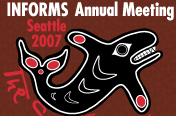
Five days at the INFORMS annual conference in Seattle during November 3-7, 2007 gave me the opportunity to interact with optimization mathematicians, game theory investigators, and simulation specialists. Suzanne Weghorst and I presented our RimSim application to a small community of emergency response logicians.
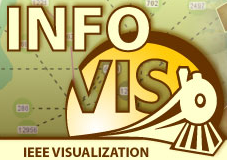 Five days at the 2007 InfoVis/Vis/VAST Conference Series during Oct 26-Nov 1, 2007 in Sacramento gave me the opportunity to participate in the Doctoral Colloquium and catch up with all the latest research and developments in the information visualization analysis and presentation fields. Of note was the groundswell of public interest in socially-mediated infovis discussions accessible via the Web.
Five days at the 2007 InfoVis/Vis/VAST Conference Series during Oct 26-Nov 1, 2007 in Sacramento gave me the opportunity to participate in the Doctoral Colloquium and catch up with all the latest research and developments in the information visualization analysis and presentation fields. Of note was the groundswell of public interest in socially-mediated infovis discussions accessible via the Web.
 Four days at Michigan Tech's Civil and Environmental Engineering department during August 22-25, 2007
let me ponder the application of agent-based simulation frameworks to emergency response planning and training modules. My host, Amlan Mukherjee,
provided spirited debate and the opportunity to hike the Keweenaw Peninsula and sail Portage Lake. I look forward to integrating and helping improve the framework obtained.
Four days at Michigan Tech's Civil and Environmental Engineering department during August 22-25, 2007
let me ponder the application of agent-based simulation frameworks to emergency response planning and training modules. My host, Amlan Mukherjee,
provided spirited debate and the opportunity to hike the Keweenaw Peninsula and sail Portage Lake. I look forward to integrating and helping improve the framework obtained.
 I finished my Masters in Industrial Engineering degree on June 8, 2007. My focus was on human-computing interfaces with a specialty in virtual reality systems. As a result, my transcript is guaranteed to be unique with a mix of industrial engineering (IND E), computer science (CSE), and technical communications (T C) specific to my interests in computer-mediated communication interfaces.
I finished my Masters in Industrial Engineering degree on June 8, 2007. My focus was on human-computing interfaces with a specialty in virtual reality systems. As a result, my transcript is guaranteed to be unique with a mix of industrial engineering (IND E), computer science (CSE), and technical communications (T C) specific to my interests in computer-mediated communication interfaces.
 Three days at the semi-annual Visualization and Analytics Consortium Meeting during May 14-16, 2007 in Bellevue, Washington let me show off our latest RimSim vision and participate with peers and customers from around the country. Our contribution is documented in a poster (29 MB) which was presented at the 2007 Homeland Security Science & Technology Stakeholders Conference at the Ronald Reagan International Trade Center in Washington DC during May 21-24, 2007.
Three days at the semi-annual Visualization and Analytics Consortium Meeting during May 14-16, 2007 in Bellevue, Washington let me show off our latest RimSim vision and participate with peers and customers from around the country. Our contribution is documented in a poster (29 MB) which was presented at the 2007 Homeland Security Science & Technology Stakeholders Conference at the Ronald Reagan International Trade Center in Washington DC during May 21-24, 2007.

 Three days at the Science + Society Conference during January 19-21, 2007 in Boston drove home many concerns about the future of science with regards to the awareness and coordination of society's participation. From astronomy to medical sciences to earth sciences, data is coming in from the far reaches of the globe and yet the numbers of people competent to manage and investigate it is minimal. Are we funding science properly? How can we better invite the general public to go along for the ride?
Three days at the Science + Society Conference during January 19-21, 2007 in Boston drove home many concerns about the future of science with regards to the awareness and coordination of society's participation. From astronomy to medical sciences to earth sciences, data is coming in from the far reaches of the globe and yet the numbers of people competent to manage and investigate it is minimal. Are we funding science properly? How can we better invite the general public to go along for the ride?
A week spent between the Purdue University and Indiana University campuses in early December 2006 reaffirmed my memories of the hospitable midwest and let me meet with twenty different project groups working on visual analytics related work. Visualization, information processing, agent-based simulation, and distributed cognition analysis are just some of the areas covered by the trip.

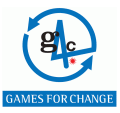
At the 2006 Games for Change Conference at the New School in New York City during June 27-28, 2006, I participated in discussions looking at suggesting social change through game play. Although ecological games were only a small percentage of the conference focus, the implementations prototyped showed great promise in changing consumer behavior via awareness. Those educators or environmentalists looking to provide environmental awareness to the masses should definitely consider the video game medium as a conduit of progressive messages. I enjoyed the depth of critical thinking and yet optimism provided by conference attendees.
 Three days at the Penn State NEVAC-GeoVISTA center during August 6-8, 2006 let me engage in meaningful discussions regarding the temporal and geospatial presentation of data as it relates to visual analytics. Chris Weaver's Improvise software quickly became the focus of my interests. Chris' open sharing of ideas and his collegial friendship which he provided in those emotional days after my dear cat's death made the trip more than just a work and academic exercise.
Three days at the Penn State NEVAC-GeoVISTA center during August 6-8, 2006 let me engage in meaningful discussions regarding the temporal and geospatial presentation of data as it relates to visual analytics. Chris Weaver's Improvise software quickly became the focus of my interests. Chris' open sharing of ideas and his collegial friendship which he provided in those emotional days after my dear cat's death made the trip more than just a work and academic exercise.
 I attended SIGGRAPH 2006, in Boston during August 1-3, 2006, as a joyous farewell to the SIGGRAPH community. I had no responsibilities except to host a dozen or so good friends in Boston and invite them to visit my house in Providence, RI. I probably had the most exhausting SIGGRAPH by paying my own way, seeing every item of interest possible, and spending it socializing with a significant percentage of the computer graphics community. For once, I waited until after the conference to start reading the proceedings.
I attended SIGGRAPH 2006, in Boston during August 1-3, 2006, as a joyous farewell to the SIGGRAPH community. I had no responsibilities except to host a dozen or so good friends in Boston and invite them to visit my house in Providence, RI. I probably had the most exhausting SIGGRAPH by paying my own way, seeing every item of interest possible, and spending it socializing with a significant percentage of the computer graphics community. For once, I waited until after the conference to start reading the proceedings. At the 2006 VAC Consortium Meeting at Stanford University during May 22-25, 2006, I participated in member organization presentations aimed at building consensus and collaboration as to our approach of applying visual analytics to the pressing information age issue of information overload (think pollution early in the industrial age).
At the 2006 VAC Consortium Meeting at Stanford University during May 22-25, 2006, I participated in member organization presentations aimed at building consensus and collaboration as to our approach of applying visual analytics to the pressing information age issue of information overload (think pollution early in the industrial age). At EclipseCon 2006 in Santa Clara, CA during March 19-24, our software development team received an impressive upgrade in understanding where the sophistication of open source development rationale and methodology has reached. Open source methods for commodity software are thriving through a transparent community process. Having spent a day side-tripping up to the DigitBarn Computer Museum, and realizing how open source was an absolute necessity back in the days of mainframe time sharing, I'm committed to supporting open source as much as possible during the day job.
At EclipseCon 2006 in Santa Clara, CA during March 19-24, our software development team received an impressive upgrade in understanding where the sophistication of open source development rationale and methodology has reached. Open source methods for commodity software are thriving through a transparent community process. Having spent a day side-tripping up to the DigitBarn Computer Museum, and realizing how open source was an absolute necessity back in the days of mainframe time sharing, I'm committed to supporting open source as much as possible during the day job.
 As the University of Washington was awarded a Regional Visualization and Analysis Center by the National Visualization and Analysis Center, I attended the RVAC kick-off meetings in Salt Lake City on January 5-7, 2006. The centers will perform research and work on an education plan for applying visual analytics science to all aspects of emergency response to better perform under conditions of urgency and stress. The PARVAC (Pacific Area RVAC) will connect academic, government, and industry centers around the Pacific Rim in collaborating on visual analytics tools and their use.
As the University of Washington was awarded a Regional Visualization and Analysis Center by the National Visualization and Analysis Center, I attended the RVAC kick-off meetings in Salt Lake City on January 5-7, 2006. The centers will perform research and work on an education plan for applying visual analytics science to all aspects of emergency response to better perform under conditions of urgency and stress. The PARVAC (Pacific Area RVAC) will connect academic, government, and industry centers around the Pacific Rim in collaborating on visual analytics tools and their use.
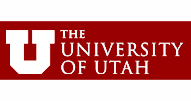 On January 8th, 2006, as a follow-on to the RVAC kick-off meetings, I wandered up into the mountains for a day to walk the ten miles it took to reach well past the snowline. Amazingly, I met no one on the walk on a Friday afternoon - I was walking in that great time of day when the shadows get longer and the sun creeps into the end of day haze - and at a change in altitude that brought me from early fall to early winter in surroundings. By the time I was halfway back down, I could see the lights of Salt Lake City coming on one after the other in rapid succession. Hard to believe the contrast between discussing terrorism and natural disasters for two solid days and then a day at peace up in Parley's Canyon. As I realized leaving in that blissful mood would defeat my purpose for the paid trip, I spent the night investigating the emergency response services at the University of Utah Healthcare Center — an amazing place with bright red helicopters arriving twice with emergency injuries (sufferred on the ski slopes, I imagined). The facilities looked so new and the people were all so serious in their demeanor as I tried to strike up conversations that would be more pleasant for their Friday night at work. By the end of it all, I wasn't sure where the NVAC-RVAC partnerships were headed, but I was willing to give it a try for the first three years' agenda.
On January 8th, 2006, as a follow-on to the RVAC kick-off meetings, I wandered up into the mountains for a day to walk the ten miles it took to reach well past the snowline. Amazingly, I met no one on the walk on a Friday afternoon - I was walking in that great time of day when the shadows get longer and the sun creeps into the end of day haze - and at a change in altitude that brought me from early fall to early winter in surroundings. By the time I was halfway back down, I could see the lights of Salt Lake City coming on one after the other in rapid succession. Hard to believe the contrast between discussing terrorism and natural disasters for two solid days and then a day at peace up in Parley's Canyon. As I realized leaving in that blissful mood would defeat my purpose for the paid trip, I spent the night investigating the emergency response services at the University of Utah Healthcare Center — an amazing place with bright red helicopters arriving twice with emergency injuries (sufferred on the ski slopes, I imagined). The facilities looked so new and the people were all so serious in their demeanor as I tried to strike up conversations that would be more pleasant for their Friday night at work. By the end of it all, I wasn't sure where the NVAC-RVAC partnerships were headed, but I was willing to give it a try for the first three years' agenda.
 I attended the Teaching About the Ocean System Using New Research Techniques: Data, Models and Visualization workshop in Seattle, Washington on July 6-9, 2005. Never before had I spent such a useful stretch of time with a mix of educators, graphic artists, information scientists, and computer scientists as we discussed the future of education as designed for the frontal cortex. I participated in many workshopping excercises from which a report was generated as part of the Cutting Edge program sponsored by NSF. Kudos to Carelton College for organizing the workshop and the UW for doing a splendid job as host.
I attended the Teaching About the Ocean System Using New Research Techniques: Data, Models and Visualization workshop in Seattle, Washington on July 6-9, 2005. Never before had I spent such a useful stretch of time with a mix of educators, graphic artists, information scientists, and computer scientists as we discussed the future of education as designed for the frontal cortex. I participated in many workshopping excercises from which a report was generated as part of the Cutting Edge program sponsored by NSF. Kudos to Carelton College for organizing the workshop and the UW for doing a splendid job as host.
 At the OpenMI Workshop in Munich, Germany on September 27-29, 2005, I participated in a discussion entitled Experiences with OpenMI that looked at how earth science simulation proponents (specifically hydrology modelers) were using the popular European OpenMI (open modeling interface) specification to link models for more complex analyses.
At the OpenMI Workshop in Munich, Germany on September 27-29, 2005, I participated in a discussion entitled Experiences with OpenMI that looked at how earth science simulation proponents (specifically hydrology modelers) were using the popular European OpenMI (open modeling interface) specification to link models for more complex analyses.
 At the Python National Convention in Washington DC, during March 22-25, 2005, I ran a paper presentation panel looking at the use of Python visualization in improving application usability. The whole conference was run through a Wiki that I updated often to participate with my take on scripting and visualization platforms. Fascinating to watch the Wiki change shape as the conference unfolded, but a Wiki-approach is only as good as those who participate in it. Nice job, everyone!
At the Python National Convention in Washington DC, during March 22-25, 2005, I ran a paper presentation panel looking at the use of Python visualization in improving application usability. The whole conference was run through a Wiki that I updated often to participate with my take on scripting and visualization platforms. Fascinating to watch the Wiki change shape as the conference unfolded, but a Wiki-approach is only as good as those who participate in it. Nice job, everyone!
 Six months in New Zealand helped me put a dissertation prospectus together. I provide it on-line as Collaborative 4-D Virtual Environments for Time-based Consensus. Time away from Seattle provided a wonderful time to dream of possible research directions. My accepted proposal was nowhere as cool as this original (see the abstract at the bottom).
Six months in New Zealand helped me put a dissertation prospectus together. I provide it on-line as Collaborative 4-D Virtual Environments for Time-based Consensus. Time away from Seattle provided a wonderful time to dream of possible research directions. My accepted proposal was nowhere as cool as this original (see the abstract at the bottom). At the August 2004 Virtual Worlds Consortium, Mark Stoermer and I presented an investigation of undersea earthquake data below the Endeavour Ridge in the northeast Pacific Ocean. A GeoWall-based presentation of the data provided the audience a unique visualization for thinking about the timing and distribution of quakes caused by tectonic plate interaction. A picture here. We presented Amazon basin remote sensing data as well on the GeoWall to highlight land use patterns.
At the August 2004 Virtual Worlds Consortium, Mark Stoermer and I presented an investigation of undersea earthquake data below the Endeavour Ridge in the northeast Pacific Ocean. A GeoWall-based presentation of the data provided the audience a unique visualization for thinking about the timing and distribution of quakes caused by tectonic plate interaction. A picture here. We presented Amazon basin remote sensing data as well on the GeoWall to highlight land use patterns.
 While at the University of Canterbury, I had the distinct honor and pleasure of attending the Symposium on the Politics of Antarctica for three days of awareness building and discussion of the state and management of Antarctica. Many of the graduate students involved were part of the program that took them to Antarctica for six days of experience. I was impressed with the quality of imagery included in the various presentations.
While at the University of Canterbury, I had the distinct honor and pleasure of attending the Symposium on the Politics of Antarctica for three days of awareness building and discussion of the state and management of Antarctica. Many of the graduate students involved were part of the program that took them to Antarctica for six days of experience. I was impressed with the quality of imagery included in the various presentations.
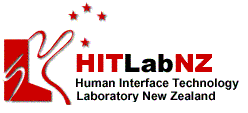 From October 15, 2003 through April 15, 2004, I provided consulting services to the HIT Lab
located at the University of Canterbury in Christchurch, New Zealand. Tasks included working
on an Access Grid node for potential around the clock connectivity
between the HIT Lab US and HIT Lab NZ and building a GeoWall node
for investigation of 4-D earth science datasets. Formal conference presentations included:
From October 15, 2003 through April 15, 2004, I provided consulting services to the HIT Lab
located at the University of Canterbury in Christchurch, New Zealand. Tasks included working
on an Access Grid node for potential around the clock connectivity
between the HIT Lab US and HIT Lab NZ and building a GeoWall node
for investigation of 4-D earth science datasets. Formal conference presentations included:
- Geographical Information Systems and Augmented Reality: A Keynote Address, 15th Annual Colloquium of the Spatial Information Research Centre, University of Otago, Dunedin, New Zealand, December 2, 2003
- Information Visualisation Techniques for the GeoWall: A Workshop, Australasian Symposium on Information Visualisation, University of Canterbury, Christchurch, New Zealand, January 24, 2004.
- Information Visualisation Techniques for the GeoWall: Emerging Technologies Exhibit, APEC Science Ministers' Meeting, Christchurch, New Zealand, March 10-11, 2004.
 At the August 2003 Virtual Worlds Consortium, I demonstrated the first application built using our home-grown OpenGL-based blue visualization engine. The application allowed a participant to drive an underwater autonomous vehicle by using hand gestures on top of the HI-SPACE table, which also presented a blue-based visualization. The application control panel allowed each pilot to change boyancy, direction, thrust, and perspective with easy gestures atop the HI-SPACE table.
At the August 2003 Virtual Worlds Consortium, I demonstrated the first application built using our home-grown OpenGL-based blue visualization engine. The application allowed a participant to drive an underwater autonomous vehicle by using hand gestures on top of the HI-SPACE table, which also presented a blue-based visualization. The application control panel allowed each pilot to change boyancy, direction, thrust, and perspective with easy gestures atop the HI-SPACE table. During March 20-28, 2003, I worked with two PhD candidates at the Information and Communications University in Taejon, South Korea. After their successful visit to the HIT Lab during Summer 2001 to connect their ATLAS high volume, multi-user communications package to our Virtual Playground 3-D visualization client, we both decided to focus on a C/C++ implementation whereby ATLAS would connect to our BlueSpace visualization engine in similar fashion to GreenSpace communications. I also presented at a computer science seminar series on campus. Short trip journal here.
During March 20-28, 2003, I worked with two PhD candidates at the Information and Communications University in Taejon, South Korea. After their successful visit to the HIT Lab during Summer 2001 to connect their ATLAS high volume, multi-user communications package to our Virtual Playground 3-D visualization client, we both decided to focus on a C/C++ implementation whereby ATLAS would connect to our BlueSpace visualization engine in similar fashion to GreenSpace communications. I also presented at a computer science seminar series on campus. Short trip journal here. At the October 2002 Virtual Worlds Consortium, I presented the first application prototype for BlueSpace, an ocean-centric perspective of sharing data and experience in a Web-based, multi-participant environment. Based on GreenSpace's ideals for a shared electronic meetingspace, BlueSpace presented a virtual marine life tank networked between a Java 3D desktop application and an ARToolKit augmented reality rendition.
A picture here.
At the October 2002 Virtual Worlds Consortium, I presented the first application prototype for BlueSpace, an ocean-centric perspective of sharing data and experience in a Web-based, multi-participant environment. Based on GreenSpace's ideals for a shared electronic meetingspace, BlueSpace presented a virtual marine life tank networked between a Java 3D desktop application and an ARToolKit augmented reality rendition.
A picture here.

On January 22, 2003, I submitted my qualifying exam answers to a committee of four faculty members. One answer is presented here entitled Building a Collaboration Machine. On Februrary 3, 2003, I successfully defended my answers and as a result passed the qualifying exam.

Mark Billinghurst and I presented Kiyoshi Kiyokawa's Occlusive Optical See-Through Displays in a Collaborative Setup application for five days within the Emerging Technologies show floor at SIGGRAPH 2002 in San Antonio, Texas.

Mark Stoermer and I showed off our NEPTUNE project Java 3D and Magic Book user interfaces to the ThinkQuest Live audience in Seattle, WA. ThinkQuest programs provide a highly motivating opportunity for students and educators to work collaboratively in teams to learn as they create Web-based learning materials that teach others. See a picture from the show.
 During May 24-27, 2002 I attended my last of five consecutive WisCon conferences in Madison, WI. So much of that last conference was affected by the passing of the Patriot Act — discussion of which seemed to invade every presentation and workshop. The conference had allowed me to stay connected with Madison while I got used to Seattle and had helped me gain a voice for writing fiction while absorbing many poignant discussions about the role of feminism in science fiction writing. I had found the writings of Isaac Asimov demeaning to women, but had enjoyed reading his stories just the same. The highlight of the five conferences for me was workshopping a story of mine and eight other people with Heinz Fenkl. I enjoyed meeting so many authors I enjoyed reading upon listening to discussions about their work.
During May 24-27, 2002 I attended my last of five consecutive WisCon conferences in Madison, WI. So much of that last conference was affected by the passing of the Patriot Act — discussion of which seemed to invade every presentation and workshop. The conference had allowed me to stay connected with Madison while I got used to Seattle and had helped me gain a voice for writing fiction while absorbing many poignant discussions about the role of feminism in science fiction writing. I had found the writings of Isaac Asimov demeaning to women, but had enjoyed reading his stories just the same. The highlight of the five conferences for me was workshopping a story of mine and eight other people with Heinz Fenkl. I enjoyed meeting so many authors I enjoyed reading upon listening to discussions about their work.
 I represented the Virtual Big Beef Creek project team at the 2002 Web 3D Symposium in Tempe, Arizona during February 2002. See a picture. The Web 3D XML specification was discussed at length at the conference. It shows such promise and yet does not have the same support by society at large as XHTML. I am happy to put my reputation on the line and say it should.
I represented the Virtual Big Beef Creek project team at the 2002 Web 3D Symposium in Tempe, Arizona during February 2002. See a picture. The Web 3D XML specification was discussed at length at the conference. It shows such promise and yet does not have the same support by society at large as XHTML. I am happy to put my reputation on the line and say it should. During September 2001, at SuperComputing 2001 in Denver, Colorado, Mark Billinghurst and I demonstrated the ARSpace software using content from the exciting NEPTUNE project.
During September 2001, at SuperComputing 2001 in Denver, Colorado, Mark Billinghurst and I demonstrated the ARSpace software using content from the exciting NEPTUNE project. See two pictures from the show.
 I exhibited a virtual 3-D model-generating floral genome within the Magic Book software at the Augmented Realities exhibit of the Boston CyberArts Festival from April 21-April 29, 2001 — a wonderful project for its pure creative enjoyment and awe of nature aspects. A picture is worth a thousand words? Or, how about a thousand words.
I exhibited a virtual 3-D model-generating floral genome within the Magic Book software at the Augmented Realities exhibit of the Boston CyberArts Festival from April 21-April 29, 2001 — a wonderful project for its pure creative enjoyment and awe of nature aspects. A picture is worth a thousand words? Or, how about a thousand words.
 I presented a poster supported by a short paper and developed software at the Medicine Meets Virtual Reality (MMVR) conference in Long Beach, CA during January 2001. Along with my HIT Lab peers and colleagues, I stood at the podium as we accepted the Satava Award for excellence in providing useful virtual technologies to the medical community.
I presented a poster supported by a short paper and developed software at the Medicine Meets Virtual Reality (MMVR) conference in Long Beach, CA during January 2001. Along with my HIT Lab peers and colleagues, I stood at the podium as we accepted the Satava Award for excellence in providing useful virtual technologies to the medical community.
 OWorlds 2000, the technology summit took place September 7-9, 2000 in Boulder Creek, CA. Teams of software developers and architects worked on a shared vision for organic, open 3-D environments. I presented and workshopped an architecture plan for cross-platform inhabitation by 3-D avatars.
OWorlds 2000, the technology summit took place September 7-9, 2000 in Boulder Creek, CA. Teams of software developers and architects worked on a shared vision for organic, open 3-D environments. I presented and workshopped an architecture plan for cross-platform inhabitation by 3-D avatars.
 Back by popular demand, the HIT Lab creshendo culminated in a fantastic roll out of the ARToolkit-based Magic Book demonstration at SIGGRAPH 2000. New Orleans was at the peak of her glory as was the lab. The plight of the Little Princess touched many a heart through it's interactive, augmented storytelling experience at the
show.
Back by popular demand, the HIT Lab creshendo culminated in a fantastic roll out of the ARToolkit-based Magic Book demonstration at SIGGRAPH 2000. New Orleans was at the peak of her glory as was the lab. The plight of the Little Princess touched many a heart through it's interactive, augmented storytelling experience at the
show.
 I was webmaster and a coordinator for the Digital Biota Three — OWorld Conference that took place November 6-7, 1999 at San José State University. Bruce Damer's invitation says it all: "Picture a Cyberspace that feels like a real place, not just an interface. Picture a Cyberspace that goes far beyond the 2D document metaphor of the Web and into 3-D virtual worlds inhabited simultaneously by millions of people who interact in a rich ecosystem of organisms, objects, and behaviors. Imagine a virtual safari into a world where humans can meet endangered species without damaging their environment. Go further. Meet true aliens that have developed in cyberspace. Beyond the conventions of modern day humans lie the non-real worlds where physics is a commodity not a law. What sort of world will ALife need or make for itself? When space is a concept not a limitation, teleportation makes more sense than walking. In the early 21st Century you may journey online through such spaces created at the boundaries of human imagination and computer technology. One such world might allow you to take on a new form and interact with organisms evolved to live and reproduce in digital space. A visionary group of developers, users, and content providers will come together to formulate platforms for open virtual worlds for humans and new lifeforms to inhabit in our futures."
I was webmaster and a coordinator for the Digital Biota Three — OWorld Conference that took place November 6-7, 1999 at San José State University. Bruce Damer's invitation says it all: "Picture a Cyberspace that feels like a real place, not just an interface. Picture a Cyberspace that goes far beyond the 2D document metaphor of the Web and into 3-D virtual worlds inhabited simultaneously by millions of people who interact in a rich ecosystem of organisms, objects, and behaviors. Imagine a virtual safari into a world where humans can meet endangered species without damaging their environment. Go further. Meet true aliens that have developed in cyberspace. Beyond the conventions of modern day humans lie the non-real worlds where physics is a commodity not a law. What sort of world will ALife need or make for itself? When space is a concept not a limitation, teleportation makes more sense than walking. In the early 21st Century you may journey online through such spaces created at the boundaries of human imagination and computer technology. One such world might allow you to take on a new form and interact with organisms evolved to live and reproduce in digital space. A visionary group of developers, users, and content providers will come together to formulate platforms for open virtual worlds for humans and new lifeforms to inhabit in our futures."
 During the upswing of the third wave of HIT Lab successes, I participated in a team of seven researchers in presenting the ARToolKit to an eager Millenium Hotel crowd at SIGGRAPH 1999 in Los Angeles. There is nothing better than seeing a lab come together and put its best face forward. Kudos to Dr. Kato and Mark Billinghurst
for providing this source of pride to the rest of us.
During the upswing of the third wave of HIT Lab successes, I participated in a team of seven researchers in presenting the ARToolKit to an eager Millenium Hotel crowd at SIGGRAPH 1999 in Los Angeles. There is nothing better than seeing a lab come together and put its best face forward. Kudos to Dr. Kato and Mark Billinghurst
for providing this source of pride to the rest of us.
 I was invited to VRST '98 in November 1998 in Taipei, Taiwan as a keynote speaker and demonstrator of the Virtual Playground software platform we developed for ITRI of Taiwan. VRST 1998 was a wonderful technology conference run in English with mainly Asian attendees. I enjoyed the interaction involved in debating the future of Virtual Reality and virtual community and the humbling experience of being an ethnic minority.
I was invited to VRST '98 in November 1998 in Taipei, Taiwan as a keynote speaker and demonstrator of the Virtual Playground software platform we developed for ITRI of Taiwan. VRST 1998 was a wonderful technology conference run in English with mainly Asian attendees. I enjoyed the interaction involved in debating the future of Virtual Reality and virtual community and the humbling experience of being an ethnic minority.
 Dace Campbell and I represented the HIT Lab at the IEEE-sponsored VRML 1997 in Monterey, CA. I presented an overview and demonstration of our early adopter Java 3D-based Netgate Mall application to a crowd of do-it-yourself 3-D modelers trying to turn the flat Web into a 3-D place through models, scene graphs, and various other computer graphics techniques.
Dace Campbell and I represented the HIT Lab at the IEEE-sponsored VRML 1997 in Monterey, CA. I presented an overview and demonstration of our early adopter Java 3D-based Netgate Mall application to a crowd of do-it-yourself 3-D modelers trying to turn the flat Web into a 3-D place through models, scene graphs, and various other computer graphics techniques.
 I defended my Masters in Computer Science degree on December 28, 1997. My degree specialty was the computer networks field which I applied to virtual reality systems using the Web as a transmission layer for exploring multi-user virtual worlds. As a result, my transcript holds just enough background in computer networking theory and background virtual reality knowledge to score me a full-time Research Scientist position at the UW. The days of my first 18 month volunteering stint and half pay status are officially over.
I defended my Masters in Computer Science degree on December 28, 1997. My degree specialty was the computer networks field which I applied to virtual reality systems using the Web as a transmission layer for exploring multi-user virtual worlds. As a result, my transcript holds just enough background in computer networking theory and background virtual reality knowledge to score me a full-time Research Scientist position at the UW. The days of my first 18 month volunteering stint and half pay status are officially over.
 At the University of Washington Husky Union Building, On March 1st and 2nd, 1997, I attended the wonderful Community Space and Cyberspace: What's the Connection? conference spearheaded by Howard Rheingold. 26 workshops provided the Seattle community the opportunity to imagine using cyberspace to improve local community. A great time for me to realize the cyberlife in Seattle was going to be relevant, rivaling San Francisco. Many of us kept up the dream by participating in the Belltown Speakeasy for the four years that followed.
At the University of Washington Husky Union Building, On March 1st and 2nd, 1997, I attended the wonderful Community Space and Cyberspace: What's the Connection? conference spearheaded by Howard Rheingold. 26 workshops provided the Seattle community the opportunity to imagine using cyberspace to improve local community. A great time for me to realize the cyberlife in Seattle was going to be relevant, rivaling San Francisco. Many of us kept up the dream by participating in the Belltown Speakeasy for the four years that followed.
 On April 27th, I presented a paper entitled VRML As a Superset of HTML: An Approach to Consolidation as part of the annual computer science school seminar. The paper was well received and the papers presented by peers were enjoyable to see as presented. What a wonderful process Rensselaer-Hartford provides graduate Computer Science students to present their first peer-reviewed paper within a friendly community of peers.
On April 27th, I presented a paper entitled VRML As a Superset of HTML: An Approach to Consolidation as part of the annual computer science school seminar. The paper was well received and the papers presented by peers were enjoyable to see as presented. What a wonderful process Rensselaer-Hartford provides graduate Computer Science students to present their first peer-reviewed paper within a friendly community of peers.
 I attended The Contact Consortium's Earth to Avatars! Conference, the first annual conference of the Contact Consortium, in San Francisco during October 26-27th, 1996. The future looked so incredibly bright for creative 3-D spaces on the Internet that could spark creative discourse and positive societal change for everyone. San Francisco looked great and the VRML community was just getting going into full swing. Heady days indeed.
I attended The Contact Consortium's Earth to Avatars! Conference, the first annual conference of the Contact Consortium, in San Francisco during October 26-27th, 1996. The future looked so incredibly bright for creative 3-D spaces on the Internet that could spark creative discourse and positive societal change for everyone. San Francisco looked great and the VRML community was just getting going into full swing. Heady days indeed.
University of Washington Presentations
Industrial Engineering Graduate Seminar Presentation on May 4, 2004:
Collaborative 4-D Environments for Time-based Consensus
UW Staff Networking Breakfast Series Presentation on June 8, 2001:
Seeing 2020: On-line Communications of the Future
Past Project: Virtual Scalable Basin
The VSB is an approach to Science & Resource management that reflects a modern approach to apply a common philosophy to all river basin modeling such that input, process, and outputs can be standardized and solutions associated with the modeling effort can be reused across basins.Past Project: Blue Graphics Engine
The CEV develops its own graphics engine that specializes in the attractive and functional presentation of earth science data within 3-D and 4-D applications. Built with open products that allow for delivery to Windows, Linux, and Mac OSX based machines, the blue engine focuses on easy incorporation of popular geographic data formats into the latest visual techniques the computer graphics community has to offer. GPU-based number crunching, shaders, and procedural-based visualizations are all explored within the engine.Past Project: PRISM (Puget sound RegIonal Synthesis Model)
PRISM is a cross-campus project to build a Virtual Puget Sound that will bring all people together on issues of Puget Sound in terms of ecology, education, and outreach. I am working on collaboration tools, learning center, active pages and 3-D visualizations of PRISM model output.Past Project: NEPTUNE ( North East Pacific Time-series Undersea Networked Experiments)
The goal of NEPTUNE is to establish a coherent system of high speed, submarine communication-control links using fiber-optic cables to connect remote, interactive experimental sites in the northeast Pacific Ocean (off the coast of Washington State) with land-based research laboratories and classrooms.Past Project: Virtual Playground/Netgate Mall
Netgate Mall is a multi-user shopping world to be shared by people using internet connected computers. Netgate Mall brings the successful distributed architecture of GreenSpace to the internet. We hope to scale Netgate Mall use to hundreds of simultaneous participants and have interesting things to do there. The Virtual Playground is currently a science and technology museum demonstration in Kaoshung, Taiwan.Past Project: Digital Anatomist
The long term goal of the Digital Anatomist project is an anatomy information system that is available from any desktop computer on the network (including the Web). I am working to build better visualizations of the semantic anatomy database (2D and 3-D visualizations) as well as investigate the Virtual Playground as a platform for collaboration during virtual dissection and assembly.
OWorld: the Biota 3 Conference
The conference was a very good education in the latest work where 3-D Virtual Environments meet Artificial Life. Take a look at the OWorld Web site. I am very interested in supporting the biota.org efforts. Creating virtual environments by hand is a tiring process and limited by human imagination. I'd love to grow some where the computer can do the work and I just provide certain guidelines and make choices between alternatives.My Masters Project: Networked Marbles
The Intructions for my Masters Project experiments explains participation in my networked Marbles world. The experiments were run the second week of December 1997 and my results were posted within my Masters Project report.A Past Project: Teachers/Pathfinders VR Web Pages
The Teachers/Pathfinders VR Web Pages Project is a site for Teachers to visit who are curious about the building of virtual worlds.NASA Java World Wind

Eclipse

